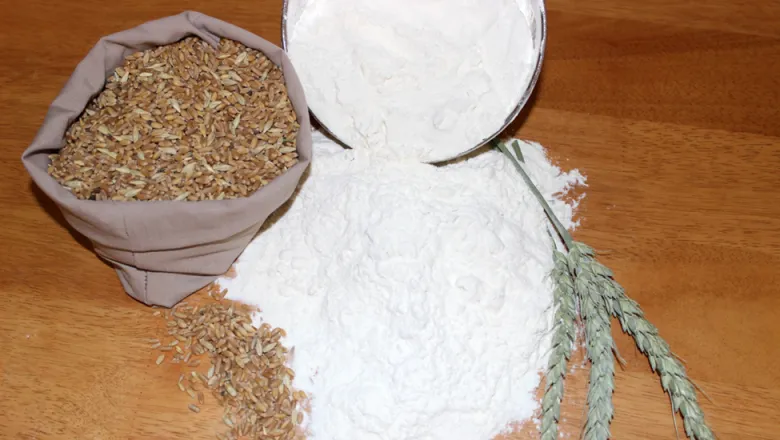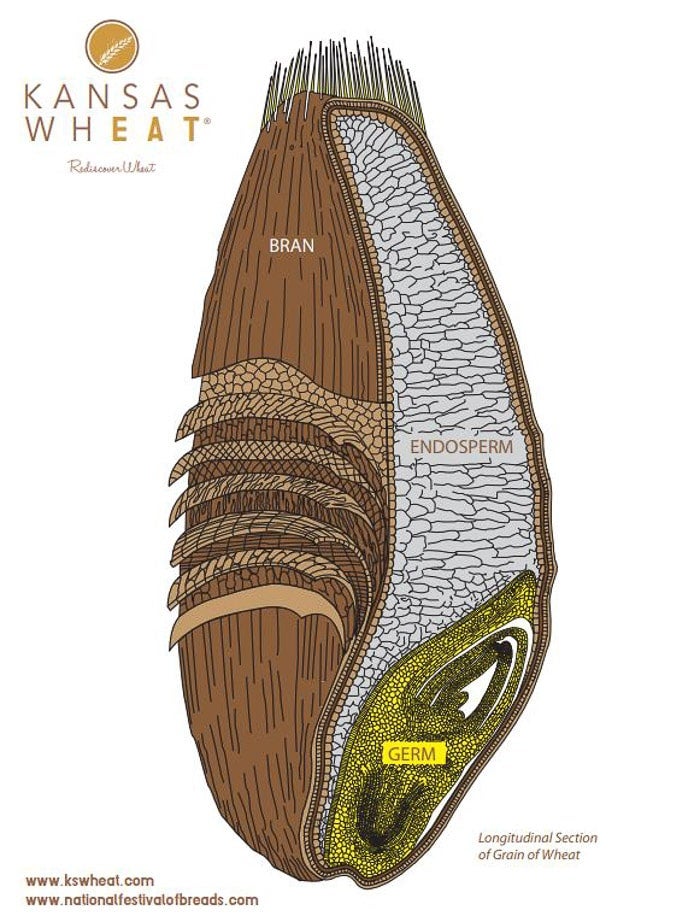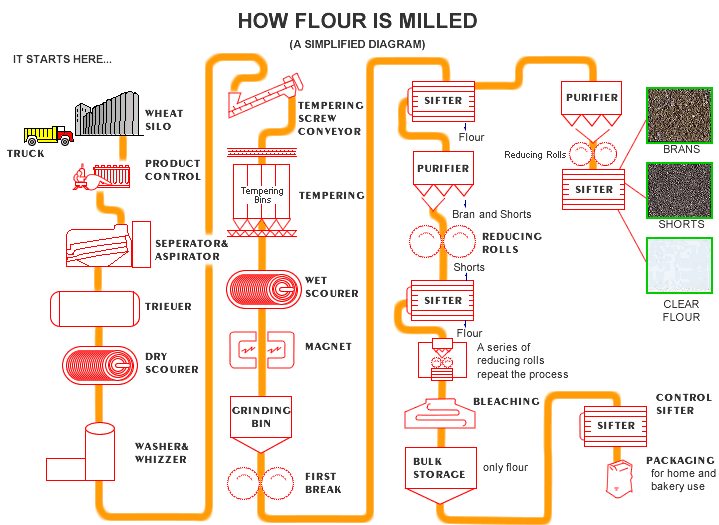all about...FLOUR

Educator Resources
March is recognized as National Flour Month. Almost every household in America can claim to have some type of flour in the kitchen. Wheat flour, a favorite of many from coast to coast, dates back to 6000 BC as evidenced by archaeological discoveries of simple mill stones.
Not all flour is the same. It takes different types of wheat to produce different types of flour. Wheat characteristic differences are what make the flour options you see on the grocery store shelf. Let’s dive into the different types of wheat and the flour types made from them.
Types of Wheat Used to Make Flour
There are different types of wheat used to make flour. Differing characteristics found in wheat flours can be attributed to the type of wheat, where it was grown and conditions under which it grew. The United States currently produces the following types of wheat:
Structure of the Wheat Grain
Wheat grain structure is made up of three parts:
The bran: the hard outer covering of the grain. The bran is present in whole wheat flour and is seen as the small brown flakes. Bran is not included in the milling of white flour.
The germ: the part of the grain that will become a new wheat plant if allowed to germinate. To learn more about the plant life cycle and germination, read our blog, Agriculture and the Plant Life Cycle. The germ has a high fat content which makes it susceptible to going rancid. Germ is included in milled whole wheat flour.
The endosperm: is the part of the grain that contains starch that remains after removing the bran and germ. The endosperm is the part of wheat grain milled to obtain white flour.

Milling Process
Flour is made during a grinding process called “milling.” Milling is the grinding of wheat kernels, also called “berries.” During the milling process, the three parts of the wheat grain (bran, germ and endosperm) are separated and recombined to make the different types of wheat flours.
Milling is a complicated process and best described in the following simplified diagram from wheatfoods.org.

Types of Wheat Flour
When the different parts of the wheat kernel are ground, separated and recombined during the milling process, you produce different types of flours.

White Flour-Produced from the finely ground endosperm of the wheat kernel.
All Purpose-White flour milled from hard wheats or a blend of hard and soft wheats. Protein content: 8-11%
Bread Flour-A combination of hard, high protein wheats. Protein content: 12-14%
High Gluten Flour-Mainly milled from spring wheat. It is mixed with other non-wheat or low-protein wheat flours to produce a stronger dough structure. Protein content: 40-45%
Whole Wheat Flour-Milled from the entire kernel of hard red wheat or created by combining the white flour, germ and bran that were separated during the milling process.
White Whole Wheat-Milled exactly like whole wheat flour and is equivalent nutritionally. The only difference between whole wheat and white whole wheat flour is that white whole wheat is made from a white, not red wheat variety. This produces a lighter color bran white produces a whiter flour.
Semolina Flour-Made up of coarsely ground endosperm of durum wheat. Durum is the hardest variety of wheat containing the highest protein.
Durum Flour-Durum flour is a by-product in the production of semolina. Often used to make pasta.
Self-Rising Flour-This flour is created with the addition of salt and leavening to all-purpose flour. One cup of self-rising flour contains 1 ½ teaspoons baking powder and ½ teaspoon salt. This special blend is used to make biscuits and quick breads.
Cake Flour-Milled from soft wheat with low protein content to produce a fine-textured and silky flour. This flour is most often used to create cakes, crackers and pastries.
Pastry Flour-This flour falls in between cake flours and all-purpose flour. Milled from soft wheat, its common use would be to create pastry, cookies, cakes and crackers. Protein: 8-9%

There is a whole wide world of flours available on grocery store shelves. Depending on your recipe and what you’re creating, you can choose the flour to best fit your needs. If you haven’t used the different types of flour, we encourage you to give them a try!
To learn more about flour, visit wheatfoods.org. There are multiple resources available to include infograghics, videos, and recipes.
Learn about planting wheat and download a PDF version of the All About...FLOUR infographic.
.jpg)
To watch a video on how wheat becomes flour by pbs.org:
Resources: uswheat.org, USDA Ag Statistics Service, flour.com, wheatfoods.org, US Wheat Associates, Inc., eatwheat.org
